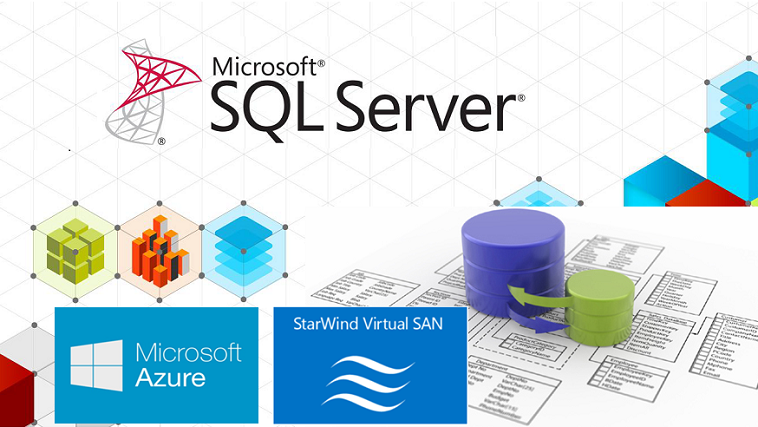This topic aims to explain the Quorum configuration in a Failover Clustering. As part of my job, I work with Hyper-V Clusters where the Quorum is not well configured and so my customers have not the expected behavior when an outage occurs. I work especially on Hyper-V clusters but the following topic applies to most of Failover Cluster configuration. What’s ...
Read More »Manage Storage Space Direct from Virtual Machine Manager
In a previous topic, I shown how to implement a Storage Space Direct on Windows Server 2016 TP2 (it is almost the same thing in Technical Preview 3). In this previous topic I created Storage Pool, storage space and some share from Failover Clustering console. In this topic, I’ll show you how doing the same operation from Virtual Machine Manager Technical ...
Read More »SQL AlwaysOn FCI in Azure IaaS Cloud with StarWind Virtual SAN Solution
1 – Introduction This article explains how to deploy an SQL AlwaysOn FCI in Azure IaaS Cloud in SAN-less mode (without Shared Storage like SAN, NAS …) with StarWind Virtual SAN solution. StarWind Virtual SAN allows to present Shared Volume to a WSFC Cluster from two or more nodes without physical shared storage solution (SAN, ...
Read More »Begin Azure IaaS – Prepare your Environment
1 – Introduction This article presents how to prepare an environment in Azure IaaS (Resource Group, Cloud Service, VMNET, VM …) from the beginning and explain Azure basic concept: creation of all required resources (Resource Group, Storage account, Cloud Services). configuration of a Virtual Network (VNET) with multiple subnet. configuration of VPN Gateway (Point-to-site VPN) for client connection and certificate configuration. ...
Read More »Why using ReFS with Hyper-V 2016
Resilient File System (ReFS) is a new file system which has been released with Windows Server 2012. The ReFS is designed to increase the integrity, the availability the scalability and the Proactive Error Correction. In Windows Server 2012 ReFS was not much used because it lacked features compared NTFS (No Disk Quotas, no compression, no EFS and so on). But ...
Read More »Switch Embedded Teaming
Switch Embedded Teaming (SET) is a new feature in the Software-Defined Networking stack that will be included in Windows Server 2016. It enables to group several physical network adapters (from one to eight) into a single virtual network adapters in a Hyper-V environment. In fact, it is SET is an alternative to standard NIC teaming. The main advantage of SET ...
Read More »MVP Hyper-V 2015 award: Thank you everyone !
Hi everyone, Since March 2014, I’ve opened Tech-Coffee with Gilles Monville to share contents about Microsoft Technologies. I’m very passionate about virtualization, software-defined networking and storage, Cloud Computing and security so I write mainly about Hyper-V, SOFS, VMM, Azure and so on. I decided to publish regularly on these technologies firstly to share my knowledges with you. Then I realized ...
Read More »Working with PowerShell Direct
PowerShell Direct is a new feature provided by the next release of Windows Server that enables to run PowerShell commands from Hyper-V hosts in a virtual machine. It works without the network and so without WinRM or other features. This is great when a firewall is misconfigured or when a network issue occurs and avoids you to manage your server. ...
Read More »Rename VM’s Network Adapters automatically with Virtual Machine Manager 2016
The next version of Hyper-V comes with a new feature called Virtual Network Adapter Identification. This feature enables to specify a name when a network adapter is added to the virtual machine and to retrieve this same name inside the VM. This feature can be also managed from Virtual Machine Manager 2016 (Technical Preview 3 where I’m writing this post). ...
Read More »Deploy and add Network Controller to Virtual Machine Manager
Network Controller is a new feature which will be available with Windows Server 2016. This feature enables to manage centrally the virtual and the physical network infrastructure to automate the management, configuration monitoring and troubleshooting. After a quick overview about network controller, I’ll explain how to deploy network controller and how to connect it to Virtual Machine Manager. Network Controller ...
Read More »








